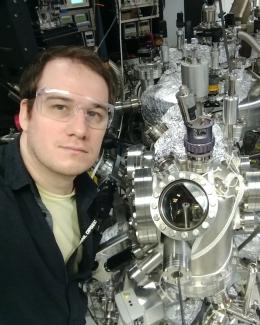Abstract
Recent advances in scanning probe microscopy and scanning transmission electron microscopy have opened unprecedented opportunities in probing the materials structural parameters and electronic properties in real space on a picometre-scale. At the same time, the ability of modern day microscopes to quickly produce large, high-resolution datasets has created a challenge for rapid physics-guided analysis of data that typically contain several hundreds to several thousand atomic or molecular units per image. Here it is demonstrated how the advanced statistical analysis and machine learning techniques can be used for extracting relevant physical and chemical information from microscope data on multiple functional materials. Specifically, the following three case studies are discussed (i) application of a combination of convolutional neural network and Markov model for analyzing positional and orientational order in molecular self-assembly; (ii) a combination of sliding window fast Fourier transform, Pearson correlation matrix and canonical correlation analysis methods to study the relationships between lattice distortions and electron scattering patterns in graphene; (iii) application of a non-negative matrix factorization with physics-based constraints and Moran’s analysis of spatial associations to extracting electronic responses linked to different types of structural domains from multi-modal imaging datasets on iron-based superconductors. The approaches demonstrated here are universal in nature and can be applied to a variety of microscopic measurements on different materials.


